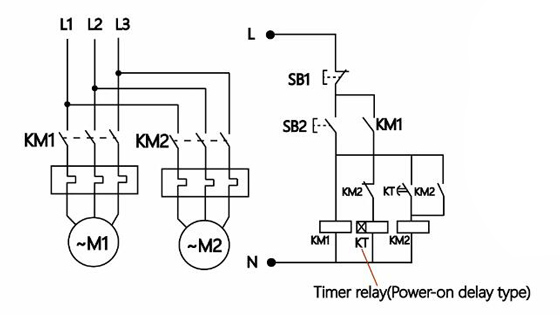What is a Timer Relay?
A timer relay refers to a relay whose output circuit needs a specified time to produce a jumping change (or contact action) after adding or removing the input action signal. It is an electrical component used on a circuit with a lower voltage or a smaller current to switch on or off a circuit with a higher voltage and a larger current.
ATO timer relay is a very important component in the electrical control system. In many control systems, timer relays are required to implement timer delay control. It is an automatic control electrical appliance that uses the principle of electromagnetic or mechanical action to delay the closing or breaking of contacts. Its characteristic is that there is a delay from the time when the attracting coil gets the signal to the action of the contact, which is generally used for the motor starting process control with time as a function.
Main functions
As an executive device in simple program control, it starts timing after receiving the start signal, and its working contacts open or close after the timing is over, thereby promoting the subsequent circuit work. Generally speaking, the delay performance of the time relay can be adjusted within the design range, so as to facilitate the adjustment of its delay time. A time relay may not be able to start delay closing, but it can be done by configuring a certain number of time relays and intermediate relays.
With the development of electronic technology, electronic timer relays have become mainstream products in time relays. It adopts an electronic intelligent digital time relay of large-scale integrated circuit technology. The time relay has a variety of working modes, which can not only realize long delay time but also have high delay accuracy, small size, convenient adjustment and long service life, making the control system simpler and more reliable.
Types
Power-on delay type (after power-on for a period of time, the contact of the timer relay will act)

Power-off delay type (after a period of power off, the contact of the timer relay will act)

Control logic
- Press the button SB2, the normally open contact of the contactor KM1 is closed, the M1 motor runs, and the timer relay (KT) starts timing.
- After the timing is completed, the KT normally open contact turns on the KM2 coil, the KM2 normally open contact closes, and the M2 motor starts.

Application
In electrical control, timer relays can be used in situations where the time principle is needed to control, such as starting and braking of motors, and the time interval of simple logic movements.

